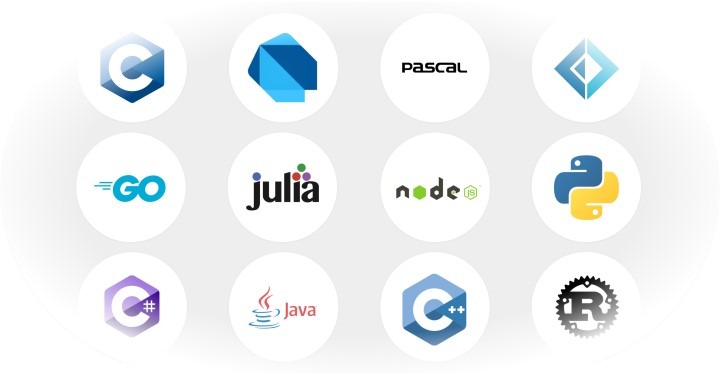Arbitrage advisors are sophisticated software designed to exploit price inefficiencies across different markets or instruments. While the concept of arbitrage is straightforward, the implementation, especially in the forex and cryptocurrency, is fraught with technical challenges. Programmers developing these systems must overcome many obstacles to create effective and profitable trading bots.
Page Contents
Programming Language Precision

Source: orientsoftware.com
The bedrock of any forex arbitrage software is its code. The choice of programming language is not just a matter of preference but a strategic decision that impacts performance. High-frequency trading demands languages that can process large volumes of data with minimal latency.
C++ is renowned for its execution speed, while Python is lauded for its versatility and extensive libraries, making them popular choices among developers. However, each language has its trade-offs, and the optimal choice often involves a combination of several languages to harness their respective strengths.
Mastery Over Multiple Platforms
Arbitrage advisors must be adept across various trading platforms. MetaTrader 4 (MT4) and MetaTrader 5 (MT5) are among the most widely used platforms in the trading community. Each platform has distinct functionalities and scripting languages—MQL4 for MT4 and MQL5 for MT5—requiring programmers to be fluent in both to leverage their advantages.
The API Conundrum in MT4 and MT5
The lack of an official API for MT4 and MT5 presents a significant challenge. To circumvent this, programmers often have to run multiple instances of the platforms, using Expert Advisors (EAs) within each to interact with the arbitrage software.
This workaround entails that each trading platform instance must have its dedicated EA, responsible for executing trades, managing data flow, and communicating with the central arbitrage system.
The alternative is to build a separate, standalone arbitrage system for each platform, which can be a more streamlined solution but requires considerable effort to ensure feature parity and optimal performance across systems.
CPU Load and Resource Management
Operating several instances of MT4 and MT5 along with the necessary EAs exerts a significant burden on the CPU. This can introduce latency, anathema to arbitrage strategies where every millisecond counts. Programmers must thus optimize their code for efficiency and may need to employ robust hardware solutions or cloud-based computing to distribute the workload effectively.
Fast Feeds and Data Center Proximity

Source: racksolutions.com
Speed is the lifeblood of arbitrage. Programmers must secure the fastest possible market data feeds and minimize the distance between their servers and the servers of the data source and execution venues. This often means colocation servers in the same data centers as major exchanges or liquidity providers to reduce transit time to the absolute minimum.
Brokerage Bottlenecks
The endgame of any trade is its execution, which lies in the hands of brokers. Execution delays can unravel even the most meticulously crafted arbitrage strategy. Programmers must design their EAs to factor in these potential delays, perhaps by deploying order execution over several brokers or employing algorithms that adapt to changing execution speeds.
The Evolution of Arbitrage Advisors
As technology advances and markets evolve, the development of arbitrage advisors also progresses. Adapting to new financial instruments, regulatory changes, and shifts in market structure all demand that programmers remain agile and informed.
Arbitrage trading exploits price discrepancies across different markets or instruments. There are several types of arbitrage strategies, each with its unique characteristics and methods of execution. The most common types include latency arbitrage, hedge arbitrage, triangular arbitrage, statistical arbitrage, and swap arbitrage.
Latency Arbitrage
- Concept: Latency arbitrage takes advantage of the time delay (latency) in disseminating price quotes between different markets or brokers.
- Execution: Traders use advanced technology to access faster price feeds, identifying opportunities where security is available at different prices in different markets. They buy at the lower price and sell at the higher price, profiting from the difference.
- Challenges: Requires sophisticated technology, often leading to a technological arms race among traders.
Hedge Arbitrage
- Concept: Hedge arbitrage involves offsetting positions in two markets to profit from the price difference.
- Example: If a stock is listed on two different exchanges and there’s a temporary discrepancy in its price between these exchanges, a trader can buy the undervalued stock on one exchange and sell the overvalued stock on the other.
- Risk Management: The hedging aspect helps reduce the market risk as the opposite positions offset each other.
Triangular Arbitrage
- Concept: This strategy involves three currencies and their corresponding pairs. It exploits discrepancies in the cross-exchange rates.
- Execution: A trader exchanges one currency for a second, the second for a third, and finally, the third back to the first. If the final amount is more than the initial, the difference is the profit.
- Complexity: Requires a simultaneous execution of trades and is expected in the forex market.
Statistical Arbitrage
- Concept: It is a broader approach that encompasses a variety of strategies (like pairs trading) based on mean reversion models.
- Execution: Involves sophisticated mathematical models to identify price inefficiencies. For example, if two historically correlated stocks diverge in price, a trader might buy the underperforming stock and sell the overperforming one, expecting them to revert to their mean price.
- Risk: Involves complex models and a thorough understanding of market dynamics.
Swap Arbitrage
- Concept: Swap arbitrage takes advantage of the price differences in interest rate swaps or currency swaps between different parties.
- Execution: Traders look for discrepancies in swap rates offered by different financial institutions and take positions that allow them to profit from these differences.
- Market Knowledge: Requires deep understanding of the fixed-income market and interest rate movements.
Each type of arbitrage strategy requires a unique set of skills, tools, and market understanding. Technological advancements and the increasing speed of information flow have made some arbitrage opportunities more challenging, yet they continue to exist in various forms across different financial markets. Successful arbitrage trading requires identifying these opportunities and the infrastructure and strategic execution to capitalize on them before they disappear.
Developing arbitrage advisors is a task that intertwines intricate programming skills with a strategist’s foresight. Programmers must write efficient and effective code and navigate the complex landscape of trading platforms, broker dynamics, and technological advancements. As the competition in arbitrage trading intensifies, the need for innovative and adaptable solutions becomes more critical.
Arbitrage trading strategies, each with unique focus and execution methods, present various levels of complexity, especially when implementing platforms like MT4 and MT5. Here’s an expanded view considering the programming challenges:
Latency Arbitrage

Source: online.hbs.edu
- MT4/MT5 Implementation: Latency arbitrage can be relatively more straightforward to implement on MT4 and MT5 through Expert Advisors (EAs) and create mt4 arbitrage ea or mt5 arbitrage ea.
- Execution: Since it primarily involves taking advantage of price delays between different sources, it’s feasible to program an EA that operates within a single broker’s platform, responding to price discrepancies as they occur.
Hedge, Triangular, and Swap Arbitrage
- Cross-Broker Complexity: Unlike latency arbitrage, hedge, triangular, and swap arbitrage often require interaction with multiple brokers. This adds a layer of complexity.
Programming Challenges:
- Multiple Platforms Communication: The arbitrage software needs to communicate with several brokers simultaneously. This means handling and synchronizing data from different sources, which can be challenging, especially given that MT4 and MT5 do not natively support direct multi-broker communication.
- API Limitations: The absence of a comprehensive API for MT4 and MT5 complicates this further. Programmers might need to find innovative ways to bridge these platforms with external systems.
- Execution Speed: These strategies require rapid execution of trades across different platforms, demanding highly efficient coding and potentially powerful hardware to minimize latency.
Additional Considerations
- Broker Policies and Slippage: Brokers’ policies on arbitrage trading and issues like slippage and execution delay can significantly impact the feasibility and profitability of these strategies.
- Risk Management: Given the complexities and risks involved, robust risk management protocols must be integrated into the software.
Developing arbitrage strategies for platforms like MT4 and MT5 requires a deep understanding of the trading strategy and the technical aspects of these platforms. Latency arbitrage might be simpler to implement within the constraints of a single broker’s platform using EAs.
In contrast, strategies like hedge, triangular, and swap arbitrage, which necessitate interaction with multiple brokers, pose significant programming challenges, requiring innovative solutions to execute trades and manage data across different platforms effectively.
Conclusion
The challenges faced by programmers of arbitrage advisors are diverse and complex. They must navigate a landscape that demands technical expertise, a deep understanding of market mechanics, and an ability to innovate within the constraints of existing trading platforms.
As the financial markets evolve and technology advances, the perpetual arms race to develop the fastest, most efficient arbitrage advisors will only intensify. Arbitrage advisors remain at the cutting edge of trading technology, pushing the boundaries of what is possible in the quest for market efficiency.





